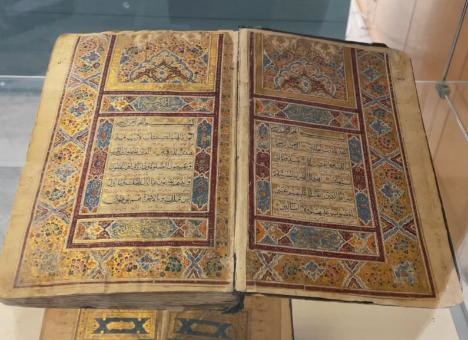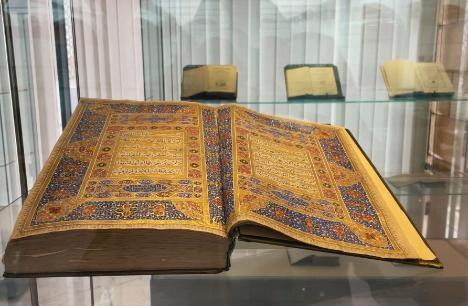RIYADH: The King Abdulaziz Public Library will host an exhibition of rare gilded and decorated Qur’ans on Thursday in celebration of the holy month of Ramadan.
The event will take place at the library’s King Abdulaziz Historical Center in the Al-Murabba branch. It is part of the library’s efforts to showcase rare items on religious and national occasions.
More than 350 Qur’ans from the library’s collection will be showcased, including intricately gilded and decorated copies from past centuries. They reflect the values and aesthetics of Islamic decorative arts, illustrating artistic methods used in designing the margins of the surahs and verses of the Qur’an.
The Qur’ans featured in the exhibition showcase a range of artistic calligraphy styles, such as Naskh, Kufi, Thuluth, Timbuktu, Sudanese, as well as the calligraphy of Sham, Iraqi, Egyptian and Yemeni scripts.
One copy is a holy manuscript from the 13th century AH, adorned with floral and geometric designs, featuring coloring and gilding. Golden clouds embellish the spaces between the lines, and the text is composed in a creative style known as “mirror,” where a letter, word or phrase in the first line corresponds to the last line. This unique alignment imparts symmetry, with each line mirroring its counterpart based on the specific type of arrangement.
On exhibit is a Timbuktu Qur’an, distinguished by its bag-shaped case and diverse decorations. Additionally, there will be a Qajar Qur’an featuring floral and geometric designs, accompanied by concise explanations in a non-Arabic language within the margins. This volume showcases drawings of varnish-coated flowers, representing a distinct school of Qur’an writing, drawing, gilding and binding.





























